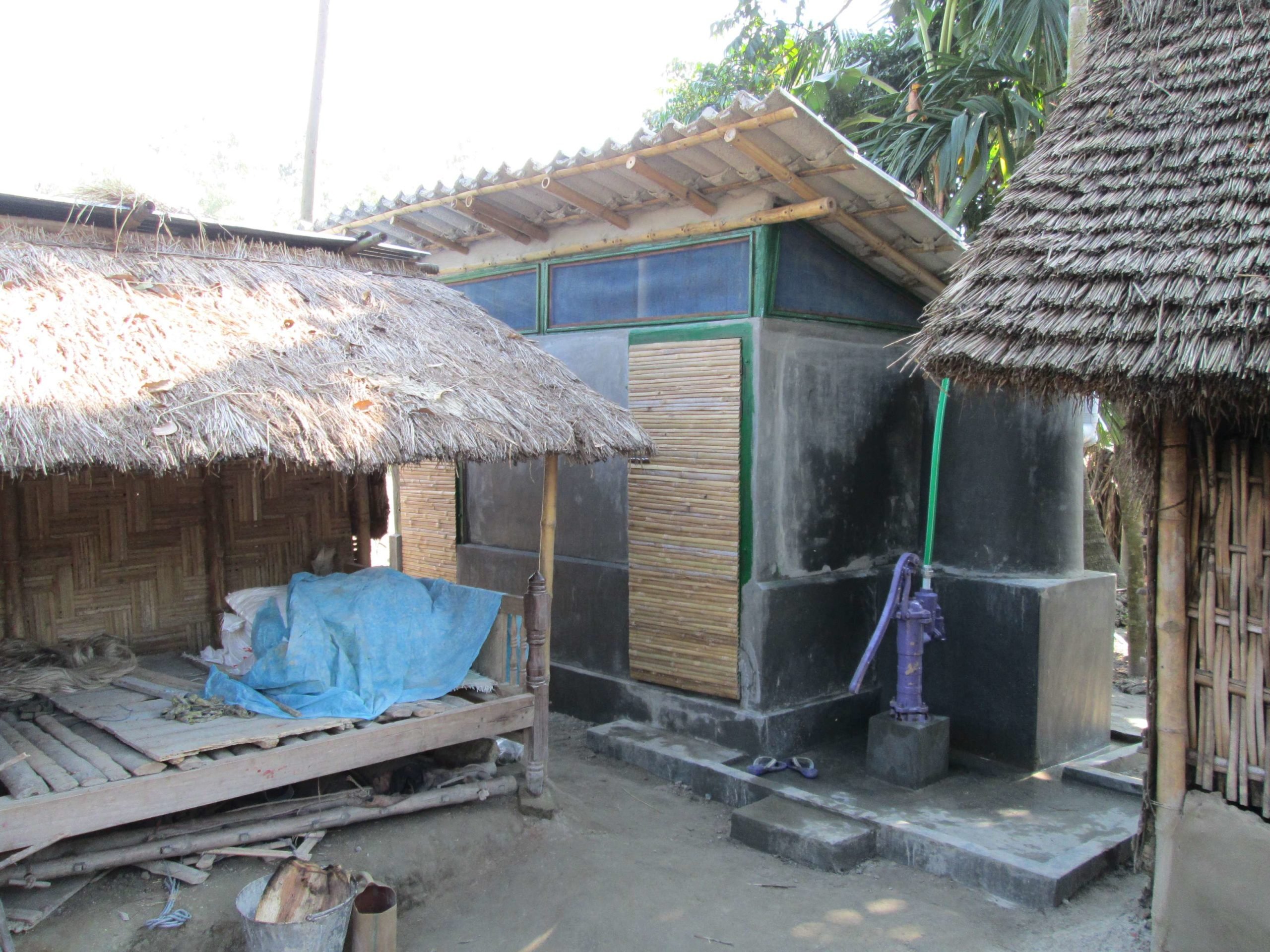Not just a hole in the ground
REMOVING WASTE SAFELY – The difference between a hole in the ground and effective sanitation
Recent work in Bangladesh highlights the important difference between building toilets and ensuring human waste and the wastewater from washing is safely treated and does not pollute the living environment.
In much of Bangladesh, the water table is high, particularly in the wet season. Previous aid programs have constructed latrine toilets in poor villages that have not survived the first wet season. First, the shallow holes in the ground that are the basis of the latrine toilet fill with water, then silt and mud fill the hole and the toilet is abandoned. The chance of the human waste infiltrating the water table and drinking water from this solution is almost a certainty.
This is a very cheap solution, in the short term, that is 100% ineffective. It reinforces poverty whilst giving the appearance of ‘doing something to solve the sanitation problems of the poorest villagers‘.
The number of toilets built, not their ongoing function to dispose of human waste safely, is used as the measure of success.
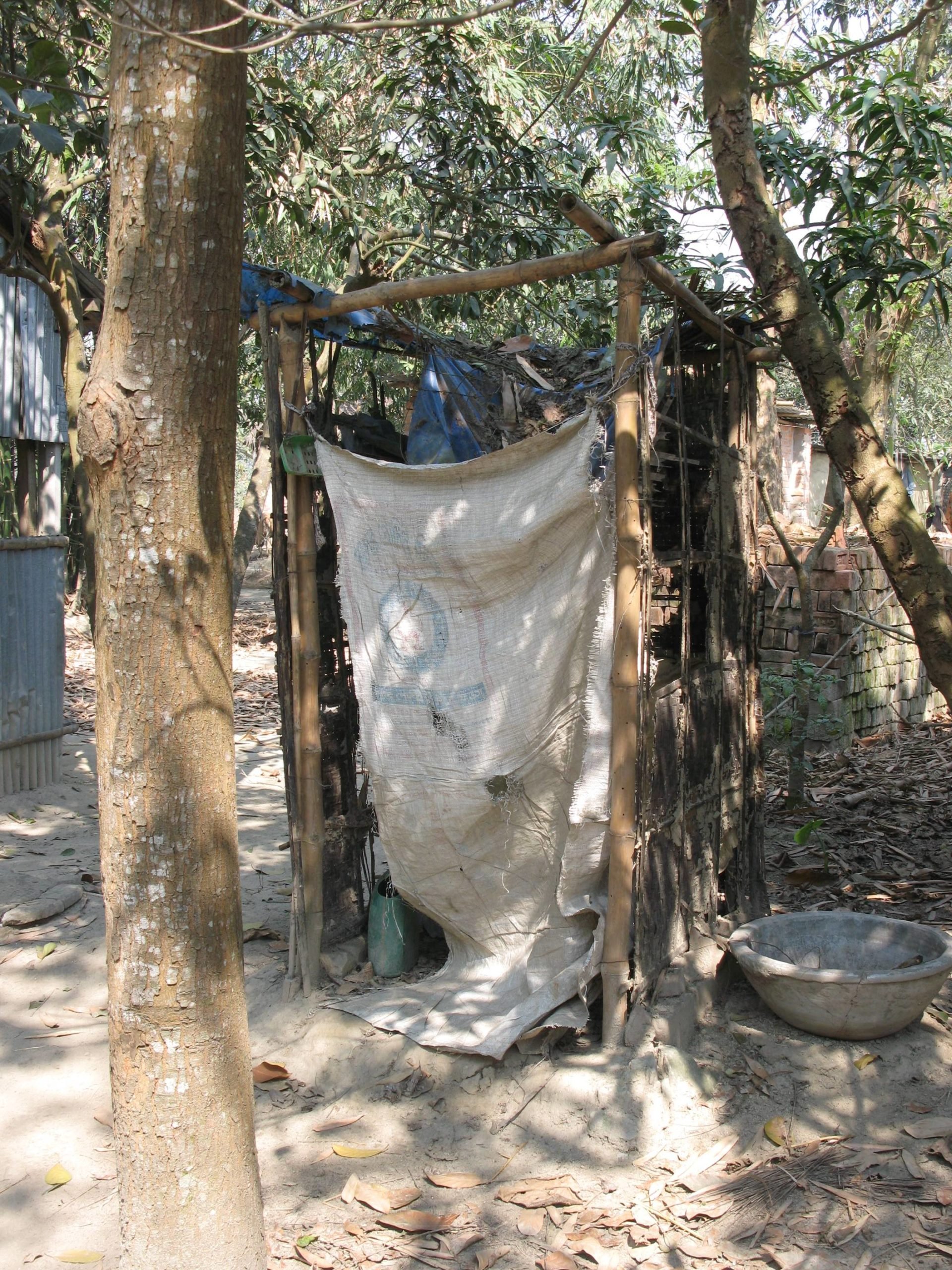
Poor screening and lack of privacy means limited use
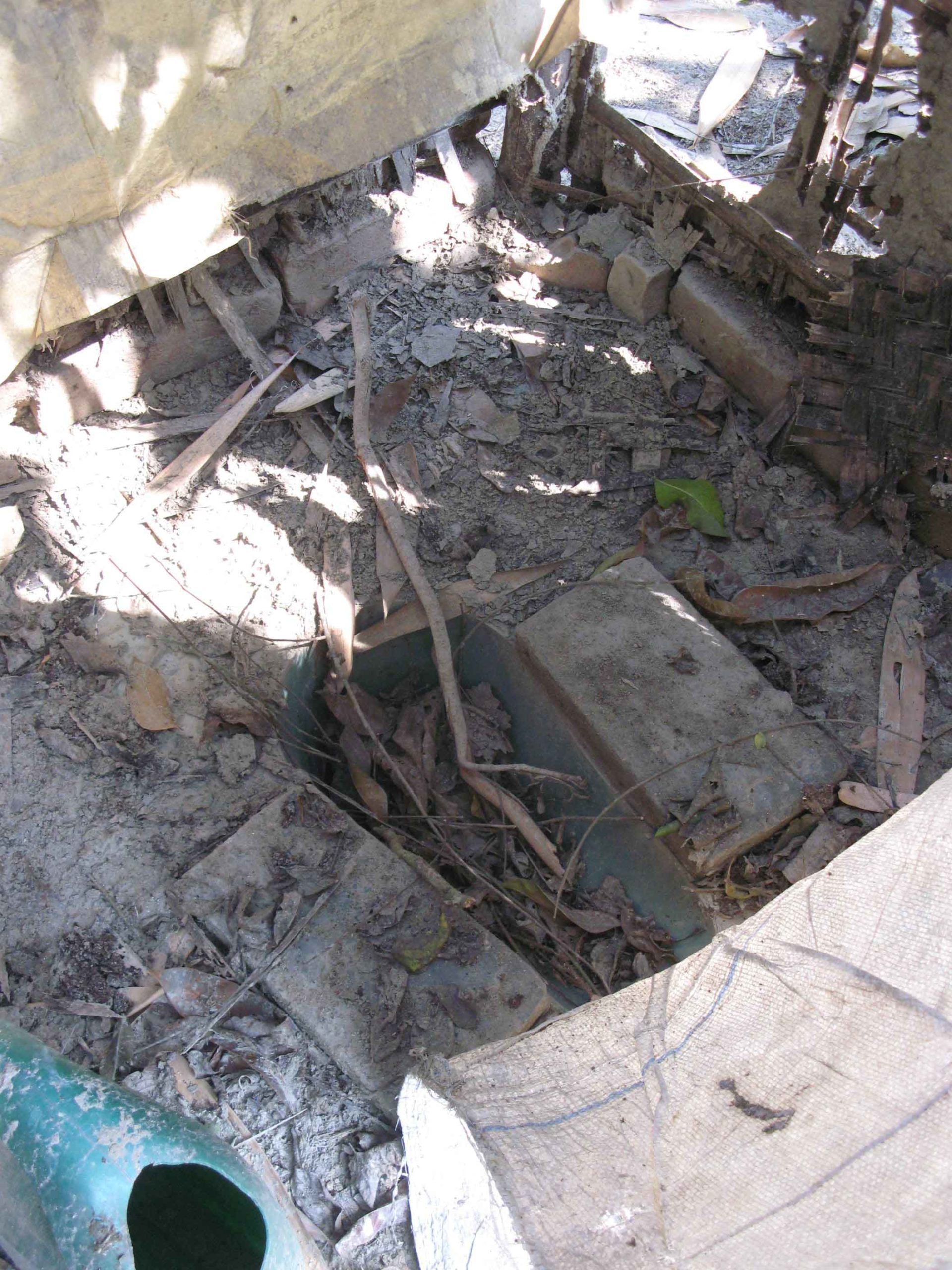
After the wet season mud and soil have blocked the toilet
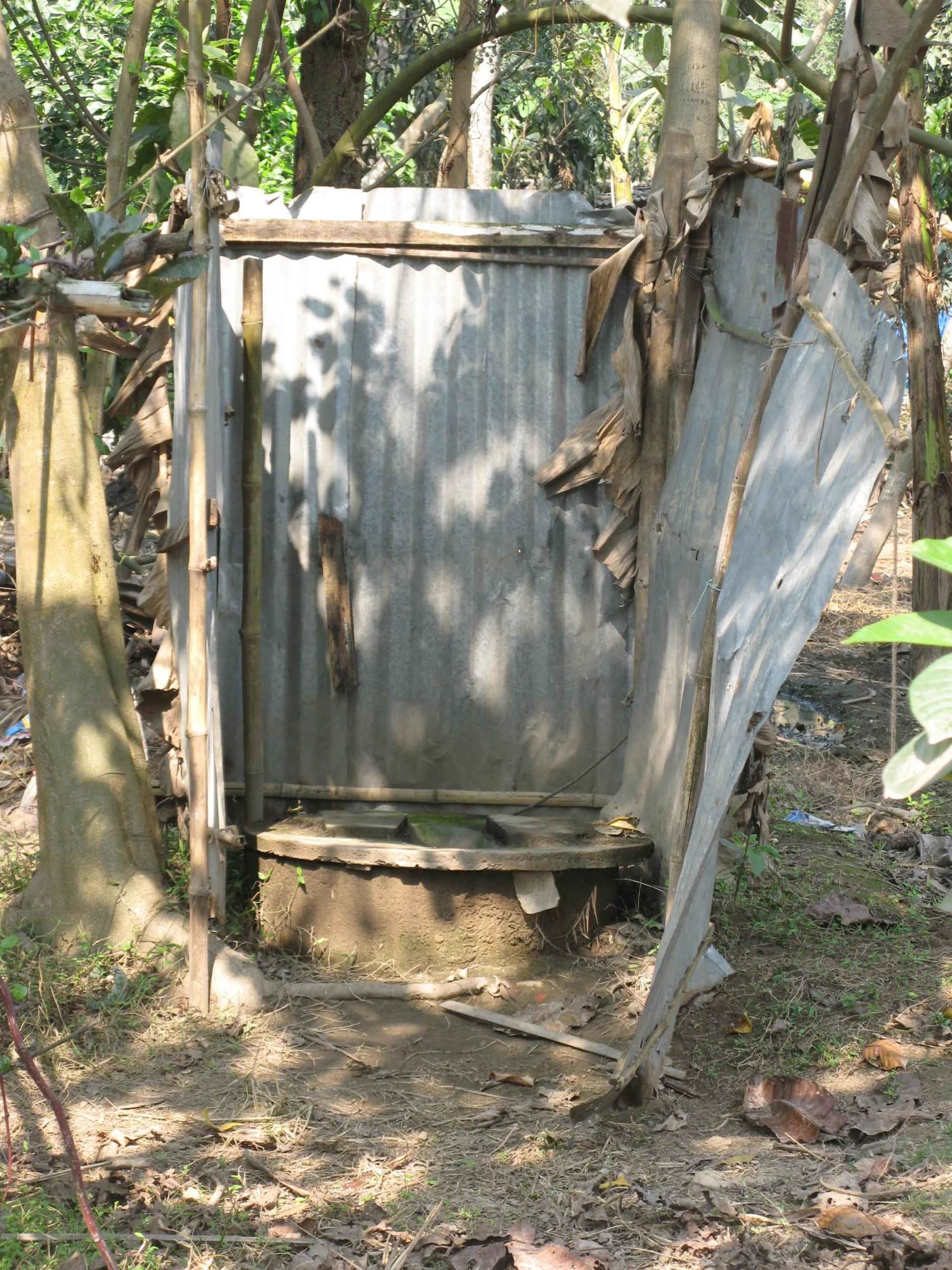
Despite this toilet having a raised pan. the wet season water and mud have filled the ‘hole’ that the pan sits above and the toilet is not used.
A more complex design task is the effective treatment of the wastewater from the wash and toilet areas and then the safe disposal of the treated wastewater product into an environment with a high water table. Composting toilets cater for only half the problem (they don’t deal with the washing waste) and even then if the compost chamber fills with water there is no effective treatment and a high chance of water table pollution.
In this environment, any design must consider:
- accurately assessing the day to day use of the toilet and wash areas – how many people will use them and how often,
- assessing how much water will be used, and therefore, need to be treated,
- does this volume of wastewater vary greatly from day to day,
- is more water generated by the washing area or the dip flush toilet area,
- treating of the washing water, proven to be high in pathogens, as well as toilet waste,
- local topography and ensuring the waste disposal is not flooded in the wet season,
- what local materials and skills are available and what construction is most affordable,
- how can the local NGO make a profit on the materials and processes used to strengthen their organisation.
From the above will come the size of the wastewater system that is needed to treat the wastewater of a family or group of families sharing the facility. If the system is too large it will be overly expensive to construct for no real return. If it is too small the waste will not be treated and the system will fail to operate in the long term.
The systems being trialled in the program are simple septic tanks with a local ring-type construction and a brick construction. Soakage trenches dispose of the treated waste above the high water table level in both systems.
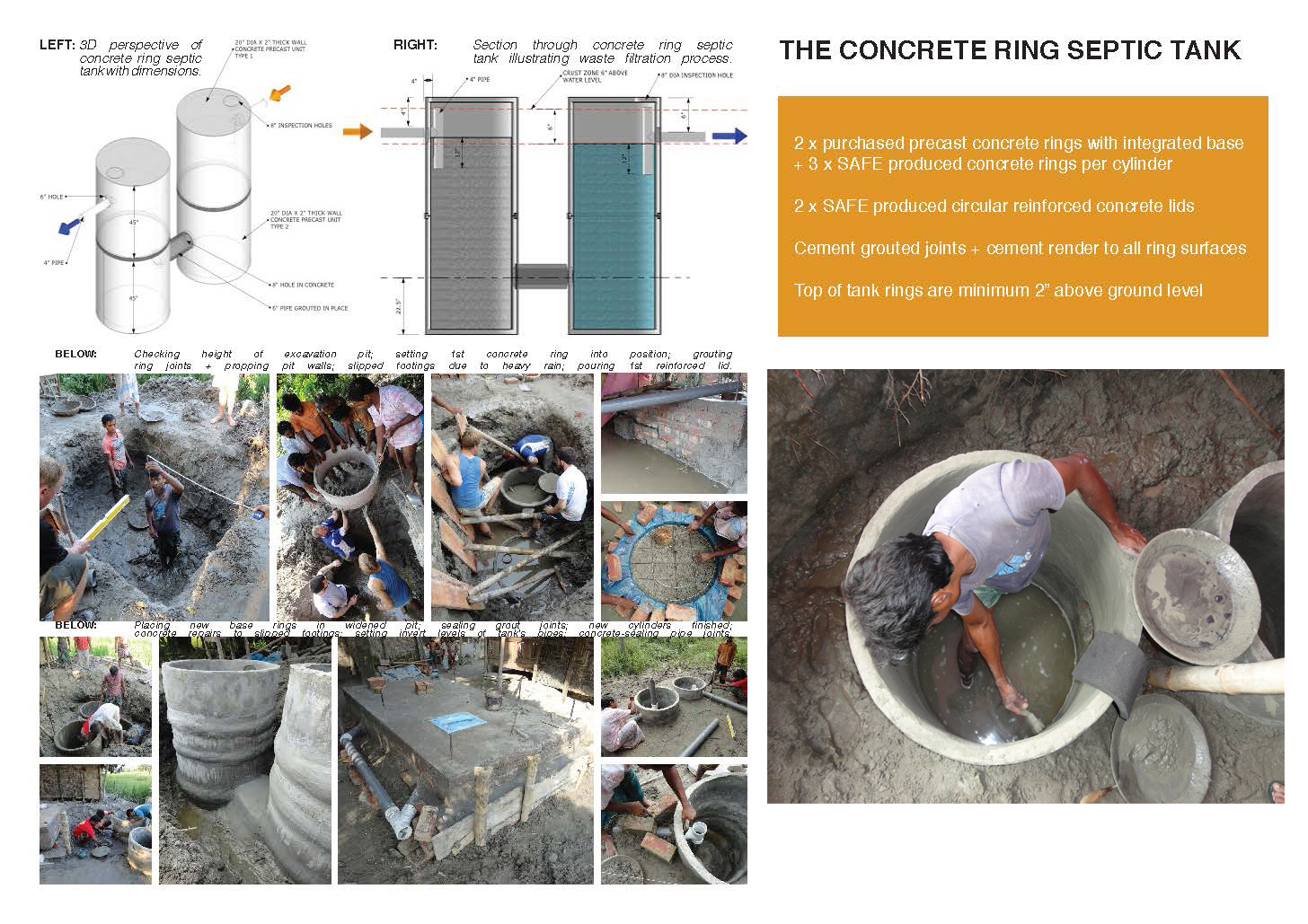
The local concrete ring septic system
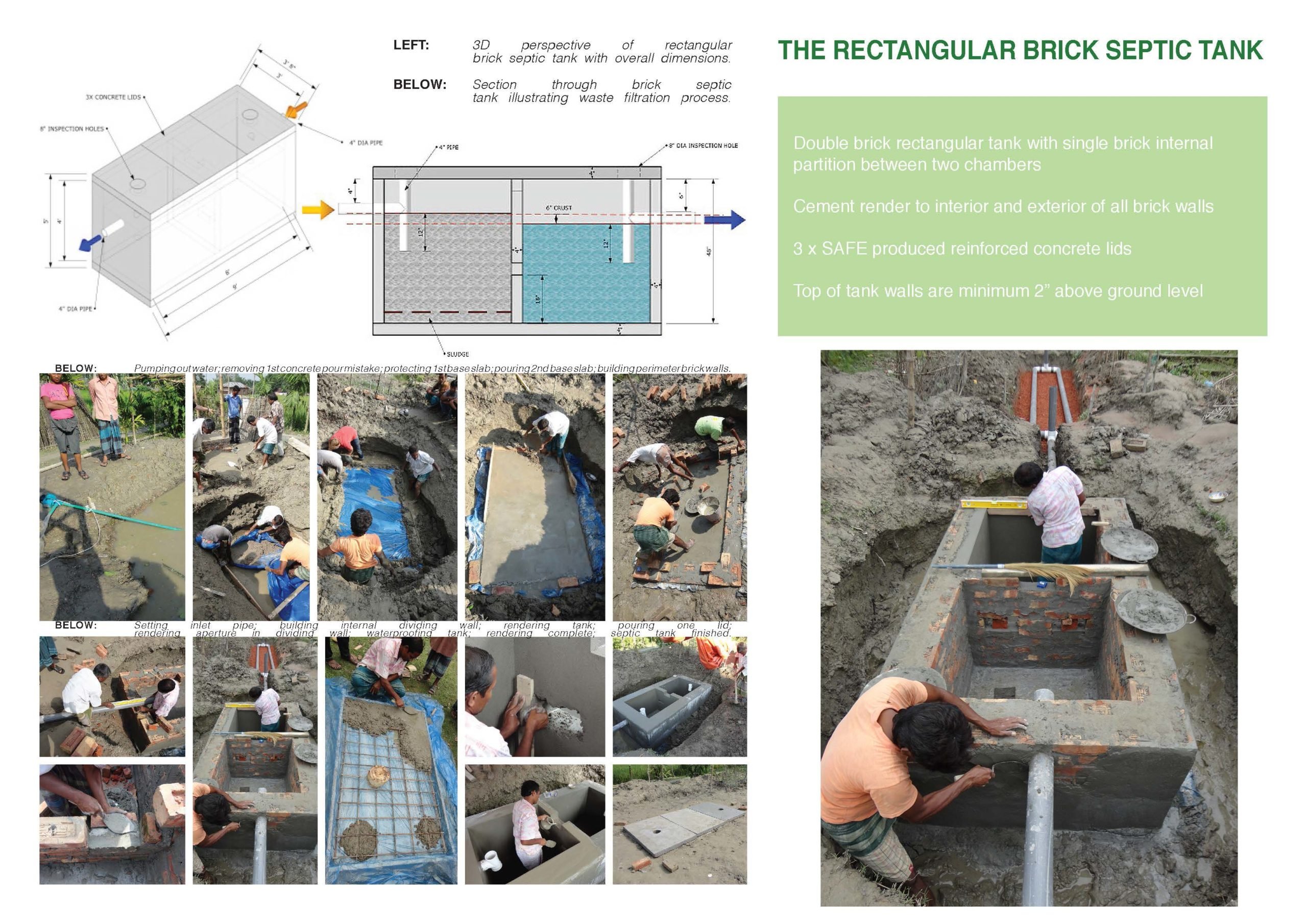
Brick septic system trial
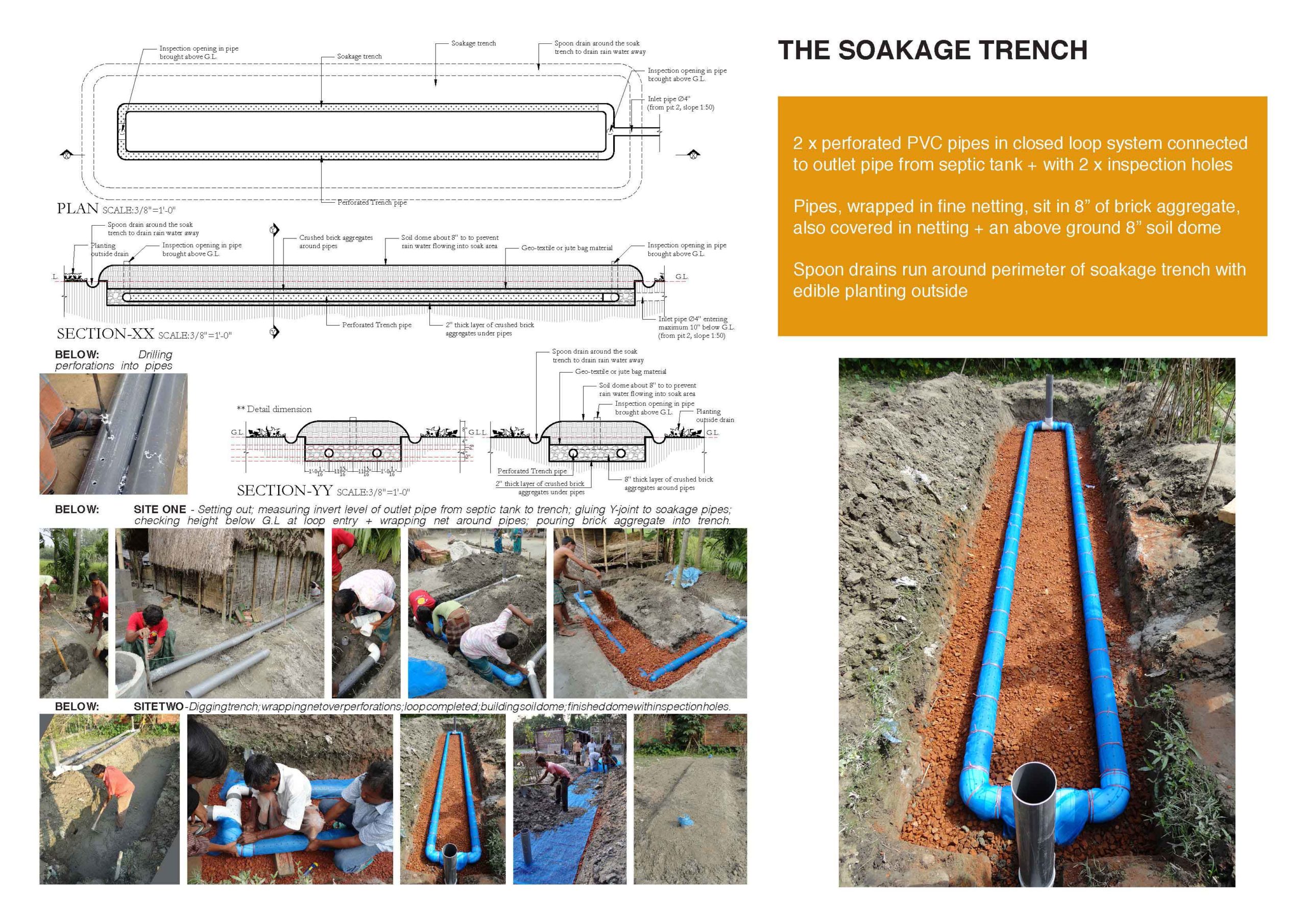
Soakage trench trial
To assess use in the trial system, during the Sanitation Workshop, villagers were asked to ‘guess’ their daily water use. There was a large range of opinions about the amount of water used in the toilet and wash area.
A water meter was fitted to each new facility and daily records are kept by the local team. This gives the total volume of water entering the waste system.

Local team members record the daily water use

Water used in each of the 2 trial wash and toilet units will be assessed to adjust/improve the waste system design.
The use of toilet and wash area is being assessed by monitors on the doors. These record the number of times the door is locked from the inside and the duration of the door being locked. In total this will give an idea of the use of the facilities. The data is being collected by local team members.

Local SAFE staff operate the computer-controlled data loggers to obtain detailed data about the use of the toilet and wash areas to help improve future designs.
After a 6 months trial period, that will include the beginning of the 2014 wet season, the villagers’ views on the facilities combined with the above mentioned data and local testing of groundwater for pathogens will determine the success of the systems.
Only after a re-design of the above ground building, adjustment of capacities of the wastewater systems and an updated construction costing will the rollout of the systems be considered.
A slightly more complex process to ensure the safe disposal of human waste compared to digging a shallow hole in the ground. Poor people do not deserve poor solutions.
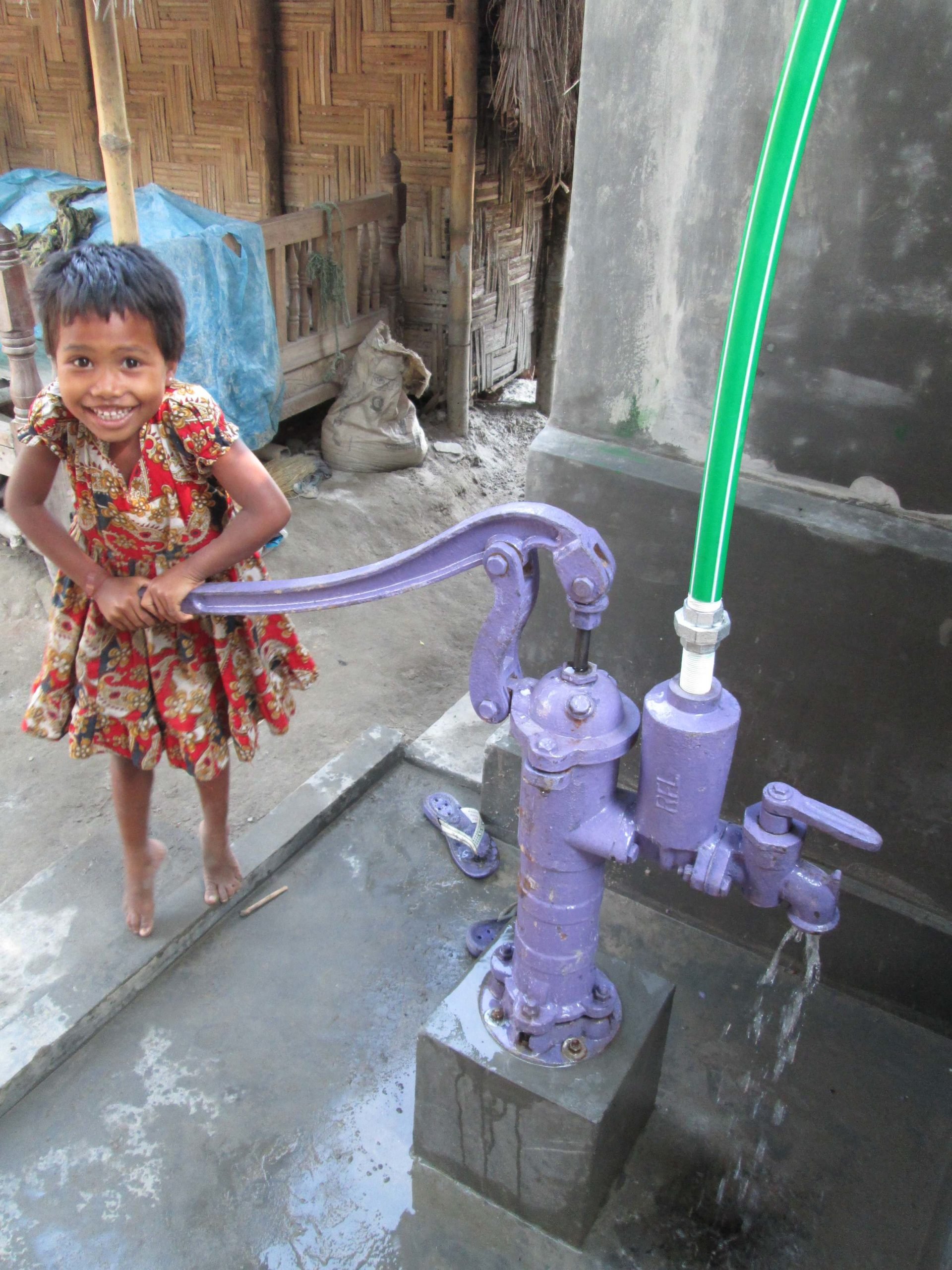
The final solution after rigorous testing
